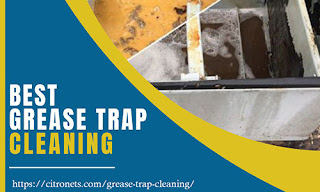The Importance of Commercial Grease Trap Cleaning: A Complete Guide
Welcome to our comprehensive guide on the importance of commercial grease trap cleaning! Whether you own a bustling restaurant, a busy food processing plant, or any other establishment that deals with cooking and oily substances, this blog post is for you. Grease traps may not be the most glamorous topic, but they play a vital role in keeping your kitchen running smoothly and maintaining a healthy environment. In this complete guide, we will explore why regular grease trap cleaning is crucial, how it benefits your business and the environment, as well as provide helpful tips for maintaining an efficient grease management system. So grab a cup of coffee (or should we say oil-free tea?) and let's dive deep into the world of commercial grease trap cleaning!
Introduction to Commercial Grease Traps
Commercial grease traps are essential components of any establishment that deals with food preparation and cooking. These specialized plumbing devices are designed to capture and remove fats, oils, and grease (FOG) from the wastewater before it enters the municipal sewage system. By doing so, they prevent these substances from clogging pipes, causing sewer backups, and polluting the environment.
Grease traps come in various sizes and designs depending on the specific needs of a commercial establishment. They can range from small under-sink models for restaurants or cafeterias to large outdoor units for industrial kitchens or food processing plants. Despite their differences in size and design, all commercial grease traps serve the same purpose – to protect your business's plumbing system and maintain compliance with local regulations.
How Do Commercial Grease Traps Work?
Commercial grease traps work by using a series of baffles and chambers that slow down the flow of wastewater as it enters the trap. This allows FOG to rise to the surface while solid particles settle at the bottom. The relatively clean water flows out through an outlet pipe that connects to your building's main sewer line.
To ensure proper functioning, most commercial grease traps also have an air intake vent near the top. This vent allows air to enter and exit freely, preventing pressure imbalances within the trap that could cause it to malfunction.
Why Are Commercial Grease Traps Important?
Proper maintenance and cleaning of commercial grease traps play a crucial role in keeping your business running smoothly
Understanding the Purpose of a Grease Trap:
A grease trap is an essential component of any commercial kitchen or food service establishment. It is designed to intercept and trap fats, oils, and grease (FOG) from wastewater before it enters the main sewage system. The purpose of a grease trap is to prevent FOG from clogging pipes, causing sewer backups, and polluting waterways.
Grease traps are typically installed in sinks, dishwashers, and other areas where FOG can accumulate. They come in various sizes and types, depending on the amount of FOG produced by the establishment. However, regardless of size or type, all grease traps work on the same principle - to separate FOG from water.
How Does a Grease Trap Work?
Grease traps use gravity to separate FOG from wastewater. When wastewater enters into the grease trap through an inlet pipe, it first passes through a flow restrictor that slows down its flow rate. This allows time for solid particles like food scraps to settle at the bottom while lighter materials such as oil and grease float to the top.
The remaining wastewater then moves through a series of baffles that further slow down its flow rate. These baffles help in trapping smaller particles that may have passed through the initial flow restrictor.
As more wastewater flows into the grease trap, heavier solids continue to sink to the bottom while lighter FOG continues to rise. The trapped FOG forms a layer on top called "scum," while solid particles form




Comments
Post a Comment